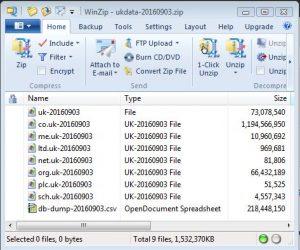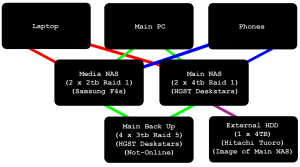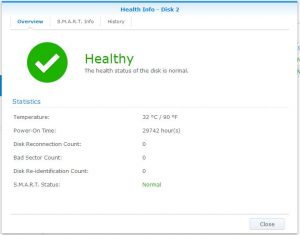This article is going to be a 4 part jobby, with a few side articles possibly, as it turned out to be somewhat longer than I expected. Most people reading this blog will know what a drop list is, but you may not know how to make one or how much effort and expense goes into it. Currently a lot less effort goes into since Nominet released the zone files. The old way will be one of the side articles I cover another time.
What is a drop list is quite a simple question; a list of domains due to expire on any given day. I’m going to talk about what you need to build one in this post, and in the next one how you build your own drop list and the costs you will likely incur in both parts. After that it will be an article on maintaining the drop list and buying drop lists in the final part. Some of the methods are hard earned lessons, which will save you time. I won’t be giving all my secrets away, some will be old methods, so there are better ways to do it, but they still work. I will also be dropping in some chunks of code too, the missing bits will be easy enough with basic coding skills which I assume you have.
Where To Start ?
Building your own drop list, isn’t too hard. It is however quite costly and time consuming, not to mention fraught with rules from Nominet. The rules are somewhat open to interpretation so I’m not going to go there, better to speak to Nominet directly about them.
Nominet Membership
Firstly a Nominet Tag is required, which is FREE, however this isn’t enough, a Nominet Membership is required. This membership costs £400+Vat to Join, then £100+Vat per year membership.
You will also need DAC Access which is £25+VAT per year, that’s the last of the Nominet costs, but not the end.
A list of Fee’s are available here… Nominet Fee Schedule, you can see the main benefit here is the cost of domains at wholesale prices, but direct access to Nominet systems is essential for list building and drop catching.
Suitable Hosting
Suitable hosting is quite subjective, but I would recommend a VPS Hosting Account. This is because shared hosting almost certainly won’t be suitable. You’ll hit your resource limits and get an get somewhat unhappy email from your host, if not asking you to upgrade or sling your hook.
A suitable VPS will cost you anywhere from £10-30 per month. This is assuming you are comfortable and able to manage a Linux Server and install PHP, MySQL, Apache and manage the required security updates yourself. Otherwise a Managed VPS will be possibly £30-80+ per month, do your own research and choose wisely.
An important factor here to remember is, unlike with Drop Catching where the speed between your server and Nominet is Critical, in this instance it doesn’t matter at all, so cheap with a decent reputation and good support is your objective.
Alternatives to VPS and Shared Hosting
I have heard of people doing this on a business hosting account, which is often half way between a low end VPS and a standard shared account or more simply a shared hosting account with more resources.
There are also a number of people who have claim they used an install of WAMP (Windows, Apache, MySQL and PHP 0r MAMP (Mac, Apache, MySQL an PHP) on a local machine, machine on their network or even on their own PC.
You could also build such a thing on a local NAS Server like a Synology NAS Server or qNAP or any other for that matter. I personally have a test environment on one of my Synology units and see no reason most 2-Bay units wouldn’t be able to handle a project of this size.
These routes are worth looking in to, but I can’t comment on any of them with regards to efficacy, as I haven’t done them.
Apply for Zone File Access
Once you’re 1, a Nominet Member with DAC Access, 2, have your hosting sorted, you need apply to Nominet for Zone File access. You have to be a Nominet Member to gain access to this. When you’ve been granted Zone File access, you need to download and process the file. I blogged on the .UK Zone File Release, to give you an idea of the process.
The file you will download is around 240mb; a zip file which contains 9 unique files inside (see right). These are individual Zone File for each available extension under the .UK ccTLD, all managed by Nominet. Exacting them all will consume just over 1.5GB of storage, more or less depending on destination disk format.
Even though there are 9 files in the archive there are only 2 types of file.
1, Zone Files, these contain details about the zone, along with domains and their name servers. We won’t be using these, for drop lists we don’t need name servers.
2, Database Dump, which is a Comma Separated Value (CSV) file.
The CSV file is a literally just a list of domains, with nothing in there which makes it very very easy to process and quite fast. It will look like the list below…
domain1.co.uk domain2.co.uk domain3.net.uk domain4.org.uk domain5.uk
Its important to note, neither the individual zone files, or the database dump contain any dates, tags or anything more other than domain names or domain names, zone data and name servers.
In Part 2, I will discuss bringing the above together to actually build a drop list.
A Manchester Based Photographer and Website Developer with interests in Strongman, Fitness and Geekery.




